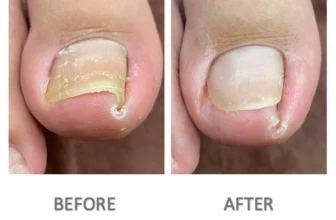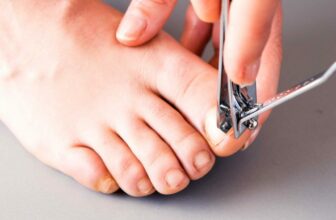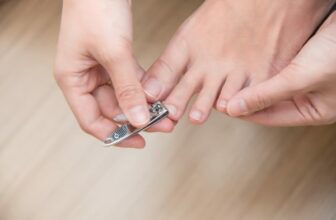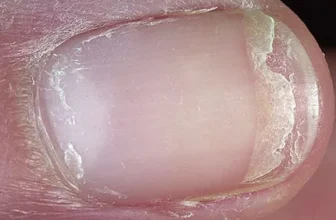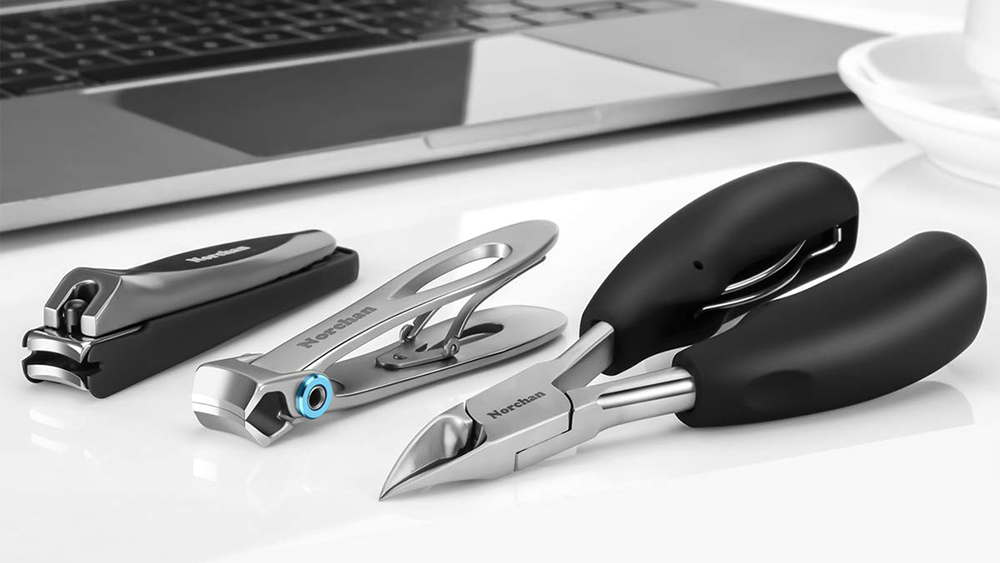
Fingernail clippers are a vital component of any nail care routine, providing the means to trim your nails to the desired length and maintain their overall health. Numerous types of clippers are available on the market, and understanding their differences is essential for choosing the right one for your needs.
We’ve gathered this and many other information here in this website, you can read more about nail care, like this article that will explain you how to cut toenails properly.
In this article, we will examine the various types of fingernail clippers, discuss the proper technique for using them, and offer tips for maintaining and cleaning your clippers to ensure long-lasting performance and hygiene.
A. Types of Fingernail Clippers
Fingernail clippers come in a range of designs to cater to different preferences and nail shapes. Understanding the distinctions between the types of clippers will help you select the best nail clipper and most suitable tool for your nail care routine, like our Swissklip reviews. Another possible option could be the Seki Edge Nail Clipper. We will explore the three most common types of nail clippers: standard, guillotine, and scissor clippers.
1. Standard Nail Clippers
Standard nail clippers are the most prevalent type of nail clipper and a staple in many nail care kits. They are designed to cater to a wide range of nail shapes and sizes, making them a versatile and practical choice for most users. In this section, we will delve into the features, advantages, and disadvantages of standard nail clippers.
a. Features
- Equipped with a curved or straight cutting edge that pairs with a lever mechanism for easy trimming
- Often made from durable materials, such as stainless steel, to ensure long-lasting performance and resistance to rust
- May include additional features, like a built-in nail file or a keychain attachment for convenience
b. Advantages
- Suitable for most nail shapes and sizes, providing versatility for users
- Compact and portable, making them ideal for home use and travel
- Generally affordable and widely available in various sizes and designs
- Easy to use, even for beginners, thanks to the simple lever mechanism
c. Disadvantages
- May struggle to cut very thick or significantly curved nails effectively
- The cutting edge can become dull over time, affecting the quality and precision of the trim
- Less control compared to scissor clippers, which can result in uneven or jagged cuts if not used carefully
2. Guillotine Nail Clippers
Guillotine clippers, though less common than standard nail clippers, offer an alternative design that some users prefer for its precise and even cuts. These clippers work best for thinner nails, as they may struggle to cut thicker nails effectively. In this section, we will discuss the features, advantages, and disadvantages of guillotine nail clippers.
a. Features
- Designed with a small hole through which the nail is inserted, allowing for a precise cut
- Cutting edge consists of a circular, sharp blade that slides across the hole when the handle is squeezed
- Typically made from durable materials, such as stainless steel, for longevity and rust resistance
- Available in various sizes to accommodate different nail sizes and user preferences
b. Advantages
- Provides precise and even cuts, making them suitable for users who prioritize accuracy in their nail trimming
- The unique design allows for better visibility of the nail during trimming, which can reduce the risk of cutting too short or unevenly
- Suitable for trimming small, hard-to-reach areas of the nail, thanks to the precise cutting mechanism
- Ideal for thinner nails, as the cutting edge easily glides through the nail without splitting or tearing
c. Disadvantages
- May not be effective for cutting thicker nails, as the cutting mechanism can struggle with increased nail density
- Requires more hand strength and dexterity to operate compared to standard nail clippers
- Less widely available and may be more expensive than standard clippers due to the specialized design
The small hole can be limiting for users with larger nails or those who prefer more control over the angle of the cut
Guillotine clippers can be an excellent choice for those who value precision in their nail care routine and have thinner nails.
3. Scissor Nail Clippers
Scissor clippers, also known as nail scissors, provide a high level of control and precision during the nail trimming process. They are particularly suitable for users with unsteady hands, thicker nails, or more curved nails. In this section, we will discuss the features, advantages, and disadvantages of scissor nail clippers.
a. Features
- Designed to resemble a pair of small scissors with curved blades specifically for cutting nails
- Typically made from high-quality materials, such as stainless steel or surgical-grade steel, for durability and rust resistance
- Available in various sizes and designs to accommodate different user preferences and nail shapes
b. Advantages
- Offers excellent control and precision, allowing users to trim their nails accurately and comfortably
- Ideal for users with unsteady hands or for trimming small, hard-to-reach areas of the nail
- Suitable for thicker or more curved nails, as the scissor design provides greater cutting force and control
- Easy to clean and maintain, as the blades can be wiped down or sanitized without disassembling the tool
c. Disadvantages
- May require more hand strength and dexterity to use compared to other types of nail clippers
- Can be more expensive than standard or guillotine clippers due to the specialized design and high-quality materials
- Less portable and compact than other clipper types, making them less convenient for travel or on-the-go use
- The scissor design may take some time to get used to, especially for users accustomed to standard or guillotine clippers
Scissor clippers can be an excellent option for those who have thicker or more curved nails.
B. Proper Technique for Using Fingernail Clippers
Using fingernail clippers effectively and safely requires proper technique, regardless of the type of clipper you choose. By following the correct steps and guidelines, you can ensure a smooth, even trim and reduce the risk of nail damage or injury. In this section, we will outline the proper technique for using fingernail clippers.
1. Prepare Your Nails
Clean your nails thoroughly to remove any dirt or debris that could cause uneven cutting or introduce bacteria during the trimming process, especially when you are cutting thick toenails for elderly.
Soften your nails by soaking them in warm, soapy water for a few minutes to make trimming easier and more comfortable
2. Choose the Right Clipper Type
Select the appropriate type of clipper for your nail shape, thickness, and personal preference (standard, guillotine, or scissor clippers)
Ensure that your chosen clipper is clean and sharp to prevent damage to your nails or the surrounding skin
3. Hold the Clippers Correctly
Grip the clippers firmly but comfortably, with your dominant hand
Position the clippers at the desired starting point, ensuring that the cutting edge is aligned with the natural curve of your nail
4. Trim Your Nails
Begin by making small cuts along the edge of the nail, working from one side to the other
Avoid cutting too close to the skin or the white part of the nail (the hyponychium), as this can cause pain and increase the risk of infection
For standard and guillotine clippers, use the lever or handle to apply even pressure as you cut; for scissor clippers, use a smooth, controlled scissor motion
5. Shape and Smooth the Edges
Use a nail file or emery board to shape and smooth the edges of your nails, following the natural curve of your nail
File in one direction rather than using a back-and-forth motion to prevent splitting or weakening the nail
6. Clean and Sanitize Your Clippers
After each use, clean your clippers with soap and water or rubbing alcohol to remove any nail clippings or debris
Regularly inspect your clippers for signs of rust or dullness and replace or sharpen them as needed to maintain optimal performance
C. Tips for Maintaining and Cleaning Fingernail Clippers
Proper maintenance and cleaning of your fingernail clippers are essential for ensuring their longevity, performance, and hygiene. Regular care will help prevent rust, dullness, and the spread of bacteria, resulting in a safer and more efficient nail trimming experience. In this section, we will provide tips for maintaining and cleaning your clippers.
1. Clean After Each Use
After trimming your nails, use a soft brush or cloth to remove any nail clippings or debris from the clippers
Wipe the clippers down with rubbing alcohol or a disinfectant solution to sanitize the surfaces and remove any remaining dirt or bacteria
Rinse the clippers under warm water to remove the alcohol or disinfectant, then dry them thoroughly with a clean towel
2. Store Clippers Properly
Store your clippers in a clean, dry place to prevent rust and the growth of bacteria
Consider keeping them in a protective case or pouch to minimize contact with other items and reduce the risk of damage
3. Inspect and Sharpen Regularly
Periodically inspect your clippers for signs of rust, damage, or dullness. If you notice any issues, address them promptly to maintain optimal performance
To sharpen your clippers, use a nail clipper sharpener or a fine-grit sharpening stone, following the manufacturer’s instructions or seeking professional assistance as needed
4. Lubricate the Hinge
Apply a small amount of lubricant, such as mineral oil or clipper oil, to the hinge or pivot point of your clippers to ensure smooth operation and reduce wear on the mechanism
Wipe away any excess oil with a clean cloth to prevent it from attracting dirt or debris
5. Replace When Necessary
Despite proper care and maintenance, all clippers will eventually wear out and require replacement
If your clippers become difficult to use, lose their cutting ability, or show significant signs of wear, it’s time to invest in a new pair
By following these tips and maintaining a consistent cleaning and maintenance routine, you can extend the life of your fingernail clippers and ensure a safe and effective nail care experience.
Conclusion
In conclusion, proper nail care is essential for maintaining the overall health and appearance of your nails. Choosing the right type of fingernail clippers, whether it be standard, guillotine, or scissor clippers, plays a crucial role in achieving the desired results. By understanding the unique features, advantages, and disadvantages of each clipper type, you can make an informed decision that best suits your needs.
Additionally, mastering the correct technique for using your chosen clippers, along with regular cleaning and maintenance, ensures a safe, efficient, and precise nail trimming experience. By following the tips and guidelines outlined in this article, you can confidently maintain your nails’ health, improve their appearance, and extend the life of your indispensable fingernail clippers.



